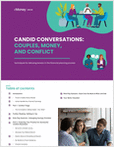Private equity industry assets are projected to grow at a median annual rate of 5.8% over the next 10 years to as much as $20 trillion, up from more than $4 trillion, according to a new report from SEI.
Once the purview of a select group of investors, private equity is now considered a core holding by many types of institutional investors, and even retail investors are getting involved through vehicles that provide exposure at low asset thresholds and more liquid terms.
SEI polled some 200 general partners, limited partners and consultants to find out where private equity was headed.
A chief driver of private equity market growth is the expanding array of investment options available to investors, SEI said. Managers are diversifying the types of strategies offered, and investors are expressing interest in products to which they previously had little or no access.
General partners in the survey said they expected increased fundraising opportunities among a broad range of institutional investors. They predicted that wealthy individuals would generate great demand for private equity in the years ahead, either directly or through family offices.
Sixty-four percent of limited partners said they planned to raise their allocation to private equity, up from 26% five years ago.
The report said traditional co-investment, direct investment and separate account structures would continue to dominate, but more liquid options were coming on fast.
Take the secondaries market. Four out of 10 survey participants said they planned to buy or sell secondary assets over the coming year, up from 30% eight years ago.
GPs are likelier to engage directly with buyers and sellers of secondaries, while LPs were most likely to invest through a secondaries fund, according to the report.
Both GPs and LPs continue to prefer commingled, closed-end funds as their investment structure of choice. However, the survey found that one out of every five limited partners now prefers co-investments over traditional closed-end funds.
Private debt is becoming a cornerstone of many private equity firms’ growth strategies. Interest in private debt as an asset class has exploded as investors have been attracted by competitive returns and diversifications. It is now found in more than half of institutional portfolios, SEI said.
Operational Challenges








 April 07, 2017 at 09:22 AM
April 07, 2017 at 09:22 AM










